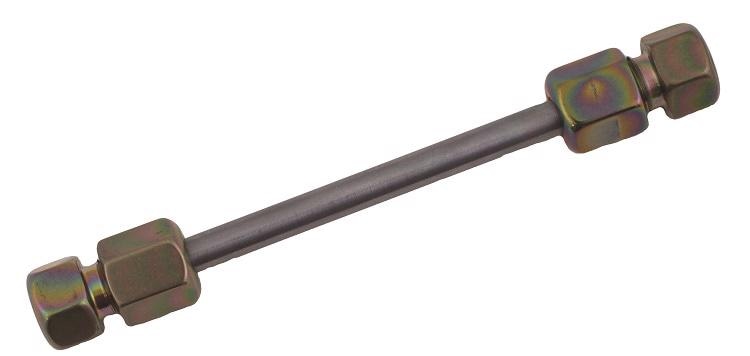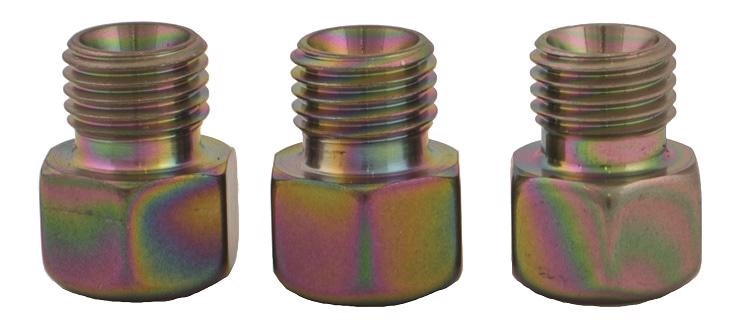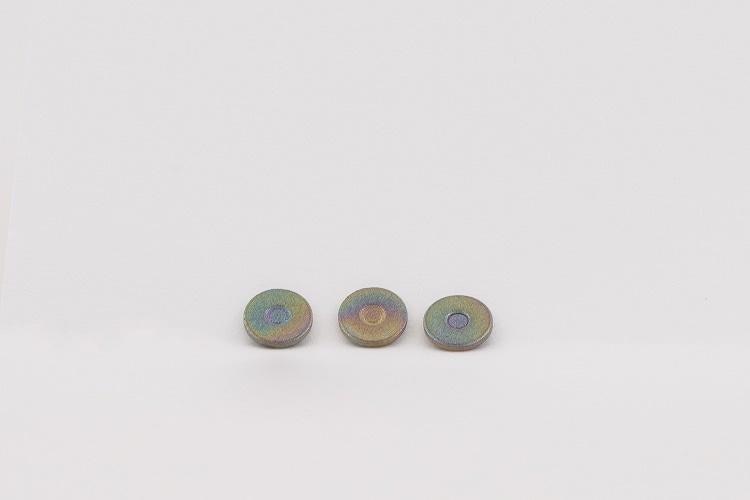
An interview with Dr. Jesse Bischof, Researcher at SilcoTek, about the process involved with creating new chemical coatings for industrial applications and the benefits of using CVD for chemical coatings.
How do CVD coatings differ from traditional coatings? What are the main differences?
Traditional coatings are mostly line of sight in nature, meaning that only the surface facing the source of the coating will receive that coating. CVD coatings have the ability to coat in a non-line of sight fashion. Anywhere the precursor gas can reach, the part will be coated. This allows us to reach the internal surfaces of frits. Traditional coatings would only be able to coat the externals of the frit surface, where we can coat through the entirety of the frit.

What is the advantage to choosing CVD coatings over traditional coatings?
In the HPLC world, coatings are a relatively new solution. Prior to our offerings, the industry moved away from stainless steel and toward a hard plastic called PEEK for any metal sensitive analysis. PEEK brings its own set of issues including inferior frit manufacturing (compared to stainless steel), column body width variations, and it is not as strong as stainless steel, so UHPLC analysis is not an option. Others have tried PEEK and glass lined steel bodies, but this does not address issues in the frits and tubing up and down stream of the column. Some other coating choices such as Teflon coatings or sol-gel coatings will have issues of penetration, especially in frits, as well as delamination issues. CVD coatings are covalently bound to the substrate, so delamination does not occur.
Why is an inert flow path critical? What impact does it have in your results?
The heart of liquid chromatography is exploiting various chemical and physical interactions that analytes may have with the packing material of the column. Any other interactions that analytes may have along the flow path will be detrimental to separations. Stainless steel is the material of choice, and there are certainly a large number of analytes that either do not interact or only mildly interact with a steel flow path, but our coatings eliminate the possibility of this interaction by making everything inert from injection to detection.
When highly active molecules are analyzed using a flow path that is not inert, they can lag behind or get stuck in the flow path. This will result in two changes in your analysis. Firstly, you could see severe peak tailing in cases where there is slight to moderate attraction to the flow path material. Secondly, you could not see peaks at all if the analyte is highly attracted to the flow path or in small concentrations. These two problems can be eliminated by coating the flow path with Dursan technology.
What benefits make Dursan SilcoTek's HPLC coating the go-to solution?
Most of our CVD coatings will create a barrier between the metal substrate and the flow path, but Dursan is our HPLC coating of choice due to two main reasons: Bio-inertness and pH stability. Protein analysis using HPLC is growing rapidly. Many pharmaceutical companies have moved away from small molecule drug development and are working toward protein based drugs called “biologics”. In a collaborative investigation with Abbott Laboratories, we found that Dursan is an excellent anti-fouling coating for proteins 1. The other reason is that some analyses utilize high pH conditions. Most of our coatings are resistant to pH less than 7, but Dursan is the only coating that is usable in the full pH range (0-14).

Is Dursan corrosion resistant, able to withstand harsh environments and harsh testing conditions? Why is this important for applications?
Dursan is very corrosion resistant. We have yet to see a typical HPLC additive that would negatively impact Dursan, where as stainless steel can have issues with halides, certain buffers, and salts. Alternative materials such as titanium can experience issues with pure organics such as methanol or acetonitrile. Any time a system experiences corrosion, there are unwanted metal ions entering the flow path and possibly causing analysis issues. Often times when iron or titanium ions enter the column, they can bind to active sites on the silica irreversibly and can essentially kill the column. Additionally, since HPLC analysis does occur at high pressures, any corrosion of the instrument can be detrimental.
Protect your Equipment from Corrosion - Dursan® from SilcoTek®
Can you tell us about some case studies where Dursan was applied? What benefits did the industry see?
A local machine shop that specializes in producing HPLC columns was experiencing a demand from their customers for a bio-inert column for various types of analyses. Unfortunately, they were experiencing issues with sourcing quality frits for their columns. Utilizing Dursan coated stainless steel, they can sell a bio-inert column without the need for inferior frits that are much more expensive. They are very happy to know that they can now provide a bio-inert column that has the robustness of stainless steel and the inertness of PEEK at a fraction of the cost of titanium. They appreciated the fact that they did not have to change anything about the way they machine their columns. Dursan is a perfect solution for ready-made stainless steel products.

What is in store for the future of Dursan?
The future of Dursan in the HPLC market will focus on customization. Currently, we have numerous potential customers evaluating Dursan in their HPLC applications and we have gotten numerous requests for a variety of surface functionalizations on the coating, just like what you would get on the packing material of the HPLC column. Also, we’re evaluating lifetimes for columns and frits to ensure that the Dursan will last through the life of the column.
Where can our readers go to find out more?
We have a vast library of resources for our customers to choose from in our online Learning Center. We have a large collection of data sheets, application guides, webinars, e-books, blog posts and more.
About Dr. Jesse Bischof
Dr. Jesse Bischof began his career teaching high-school chemistry classes for two years before going to graduate school at The Pennsylvania State University where he earned his Ph.D. in Chemistry. Upon completion of his degree in 2016, Jesse began his role as a researcher in SilcoTek's Research and Development department. Jesse’s expertise has helped customers in the medical and analytical markets to improve part performance, material characterization, and instrumentation. Currently, Jesse's research is focused on developing and optimizing bio-inert coatings as well as anti-fogging coatings.

Disclaimer: The views expressed here are those of the interviewee and do not necessarily represent the views of AZoM.com Limited (T/A) AZoNetwork, the owner and operator of this website. This disclaimer forms part of the Terms and Conditions of use of this website.